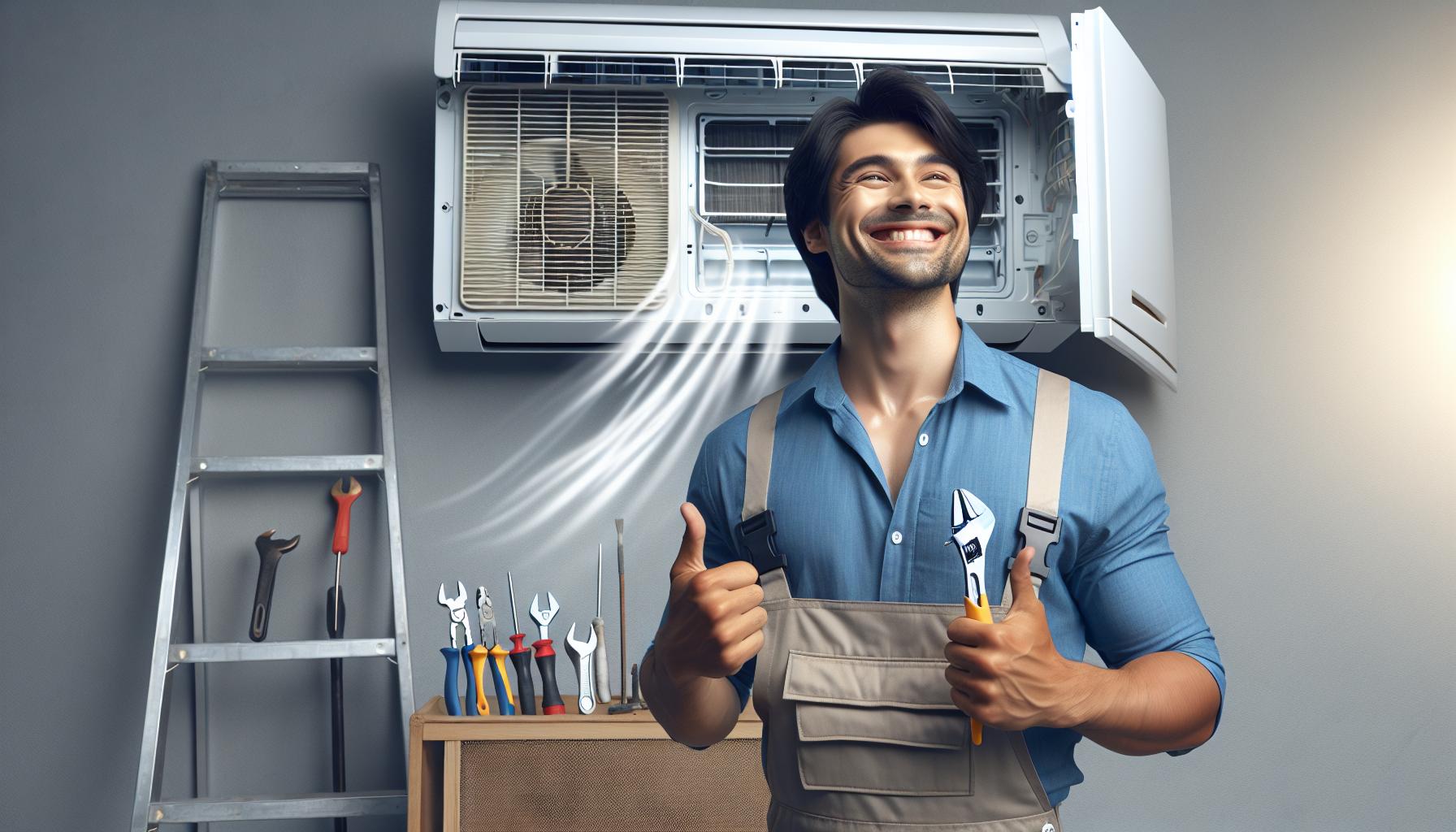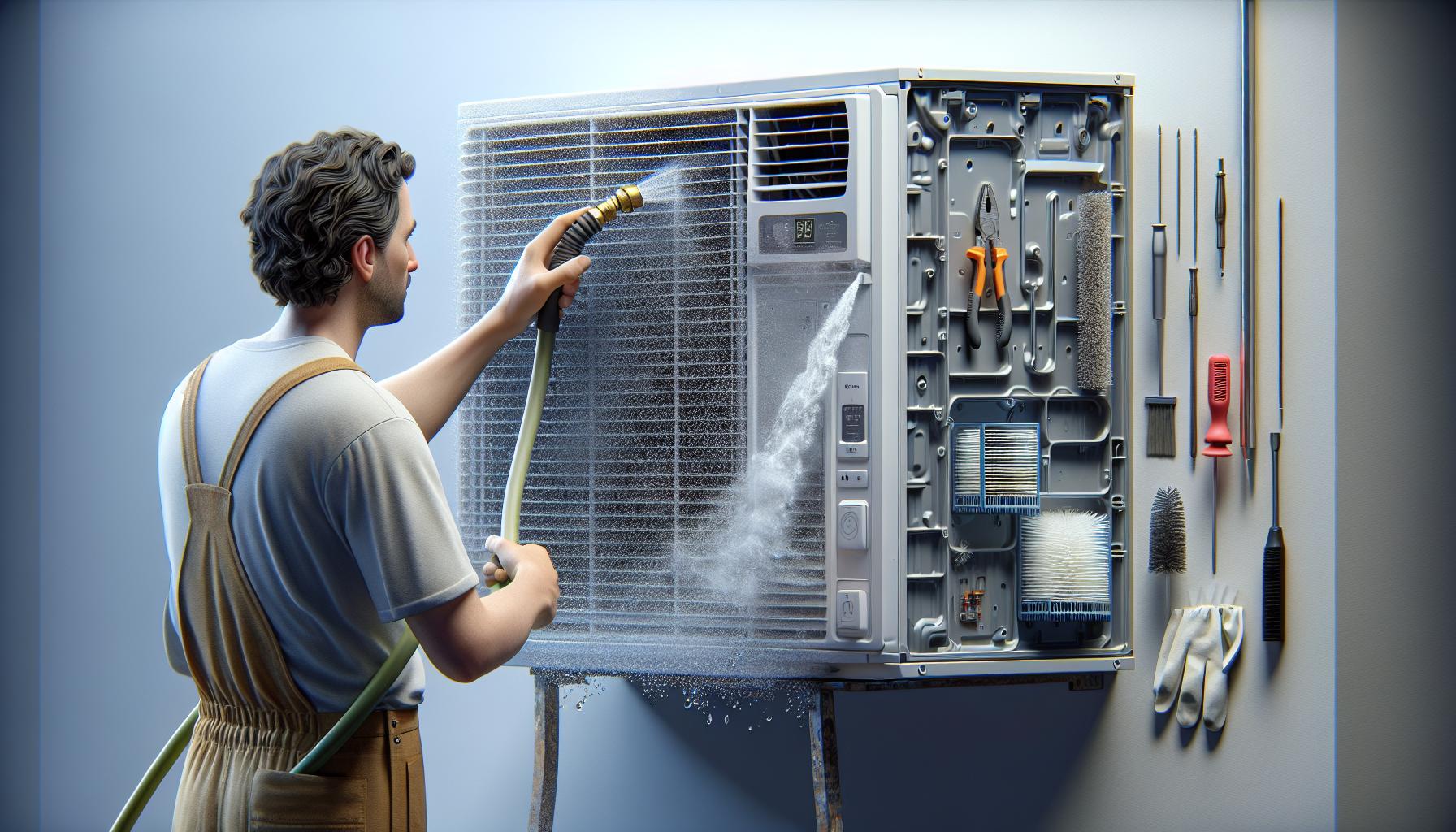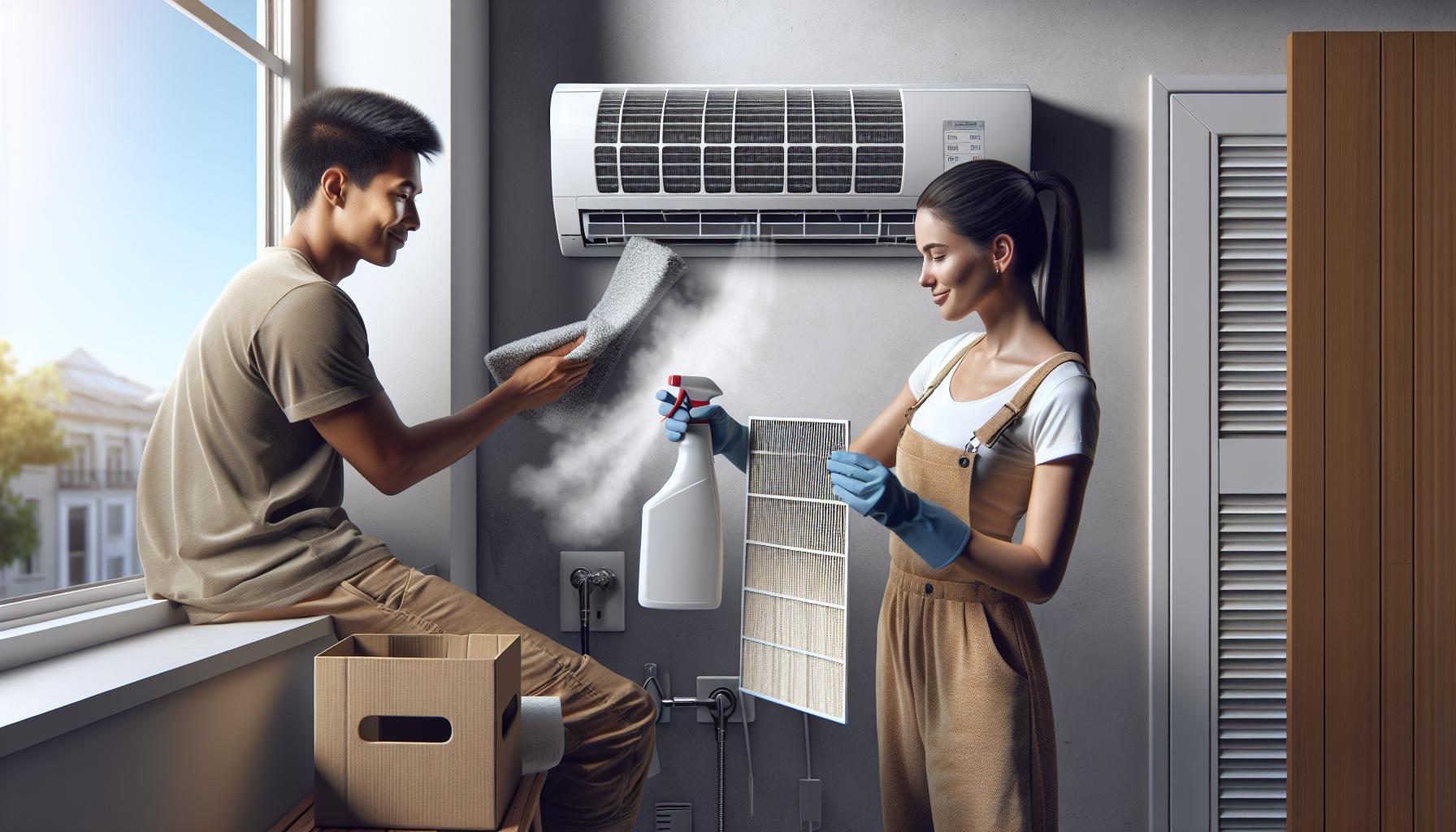When your Pentair MasterTemp 400 signals a service heater light, it’s alerting you to a potential issue that needs your attention. Understanding what causes this light to turn on is crucial for maintaining your pool’s comfort and extending the life of your heater. In this article, you’ll discover the common triggers for the service heater light and get step-by-step guidance on how to troubleshoot them.
You’re not alone in facing this heating hiccup; many pool owners experience similar challenges. Stay with us as we delve into the solutions that will help you restore your pool heater to its optimal performance, ensuring you’re back to enjoying your warm, inviting pool in no time.
Common Causes of the Service Heater Light
When your Pentair MasterTemp 400 service heater light illuminates, it’s crucial to identify the root cause to prevent further damage and restore functionality swiftly. The causes range from minor issues that you can fix yourself to more complex problems that may require professional assistance.
Air in the System
Air can become trapped in the heating system, which disrupts normal function. If the pressure switch detects inadequate water flow caused by air pockets, it’ll activate the service heater light as a safety precaution. This is often the result of:
- Improperly primed pumps
- Leaks in the suction line
- A low water level in the pool
Water Flow Restrictions
Impeded water flow is another key factor that triggers the service light. Restricted flow can be traced back to:
- A dirty filter or pump basket
- Closed or partially closed valves
- A malfunctioning pump
Faulty Pressure Switch
A pressure switch that’s stuck or failing can falsely signal an issue. Regular maintenance and checks are your best defence against such malfunctions.
Thermal Regulator Issues
When the thermal regulator, which maintains a stable water temperature, malfunctions or gets obstructed, the service light may come on. Symptoms of regulator problems include:
- Inconsistent water temperature
- Heater cycles on and off more than usual
High Limit Switch Activation
The high limit switch safeguards against dangerously high temperatures. If this switch is tripped, the service heater light goes on. Common causes include:
- A malfunction in the thermostat
- A genuine overheating issue
Promptly addressing these issues is essential for maintaining your pool’s comfort and the heater’s integrity. It’s worth noting that regular maintenance not only prevents these triggers but also extends the life of your heater. Remember to always refer to the owner’s manual for specifics on troubleshooting your Pentair MasterTemp 400, keeping in mind that for some repairs, it’s advisable to secure the services of a certified technician.
How to Troubleshoot the Service Heater Light
Troubleshooting the service heater light on your Pentair MasterTemp 400 requires careful steps to ensure accurate diagnosis and repair. Starting with the simplest potential causes can often resolve the issue without the need for extensive investigations or professional help.
Check the Power Supply
Firstly, verify the power supply to ensure that your heater is receiving adequate electricity. A tripped circuit breaker or a blown fuse can prevent the heater from functioning properly. Reset the circuit breaker and replace any blown fuses, then observe whether the service heater light remains on.
Inspect for Blockages
Another commonplace check involves inspecting for blockages in the heater’s vents and intake. Debris or nests built by small animals can cause improper ventilation and heating issues. Clear any blockages you find, but take care not to damage any components in the process.
Examine the Water Flow
Adequate water flow is crucial for heater operation. It’s worth examining your pump and filter to ensure they are working efficiently. Clean or replace your filter if necessary, and ensure the pump is functioning correctly. Low water flow can trigger the service heater light due to safety features in the heater preventing operation under suboptimal conditions.
Sensor and Wiring Inspection
Faulty sensors or damaged wiring can lead to incorrect readings and malfunctioning of the heater. Check the wiring for signs of wear or damage and ensure that all connections are secure. It’s advisable to consult the owner’s manual for guidance on accessing and inspecting the sensors.
Professional Assessment
If these checks don’t resolve the issue, it’s likely that the problem is too complex for a layperson to fix safely. In such cases, it’s vital to contact a certified technician who can conduct a thorough assessment and undertake any necessary repairs. Remember, tinkering with gas and electrical components without proper training can be dangerous and might void your heater’s warranty.
By methodically working through these troubleshooting steps, you’ll be able to identify and potentially rectify common issues related to the service heater light. Regular maintenance and attention to your Pentair MasterTemp 400’s functionality are key to preventing future occurrences. If you’ve conducted the advised checks and the service heater light persists, it’s time to seek professional advice for a detailed inspection and specialised repairs.
Step 1: Check the Filter and Water Flow
Before delving into complex diagnostics, you must ensure your Pentair MasterTemp 400’s filter and water flow aren’t part of the issue. A dirty filter can restrict the flow causing the heater to malfunction. First, turn the heater off and inspect the filter. If it’s dirty, cleaning or replacing it could solve your service heater light issue.
Next, you’ll want to examine the water flow rate. Adequate flow is crucial for the heater’s performance. Here’s what you can do:
- Check for any visible blockages in the pipes or pump basket and clear them.
- Confirm the pump is operating correctly and that the valves are in the correct position for optimal water movement.
- Examine the pressure switch to ensure it isn’t faulty as it can affect water flow detection.
A stable water flow rate not only optimizes heater function but also extends equipment lifespan. Monitoring and maintaining the proper flow rate will help you avoid many heater issues in the long run.
Remember, obstructions in your system can cause low pressure which directly influences heater performance. Regular checks and prompt cleaning of filters and baskets are essential practices that keep your Pentair MasterTemp 400 running smoothly.
Step 2: Inspect the Gas Supply
When your Pentair MasterTemp 400 service heater light is on, it’s essential to check the gas supply as your next step. Gas supply issues are common culprits when it comes to heater malfunctions.
Firstly, verify the gas type and ensure that it matches your heater’s requirements. The MasterTemp 400 operates with either natural gas or propane, but not both. Mixing gas types can result in inadequate heating or potentially dangerous situations.
Next, inspect the gas lines for any signs of damage or leaks. Physical damage or corrosion can impede gas flow, leading to heater failure. If you suspect a leak, you need to address it immediately due to the high risks involved.
It’s important to check the gas valve to ensure that it’s fully open. A partially closed gas valve can restrict the flow, causing the service light to activate.
Finally, confirm that the gas pressure is within the recommended range for your heater. Incorrect gas pressure can prevent your heater from igniting and operating effectively. If you’re unsure about how to measure gas pressure, it’s best to call a professional.
Remember to perform these checks with caution and consider hiring a qualified technician if you’re not comfortable handling gas supply issues. Regular maintenance of your gas supply lines and valves is crucial for both safety and the efficient operation of your Pentair MasterTemp 400.
Step 3: Examine the Ignition System
After ensuring your gas supply is optimal, it’s vital to turn your attention to the ignition system of your Pentair MasterTemp 400. Faults within this system could trigger the service heater light. The ignition sequence is key for the heater’s operation and requires careful scrutiny.
Firstly, check the igniter. This component is prone to wear and if faulty, it won’t initiate combustion. You’ll need to inspect the igniter for any signs of damage or carbon buildup which could prevent a spark from forming. If the igniter’s resistance is outside the manufacturer’s specified range, you’ll need to replace it.
Next, explore the flame sensor’s condition. A dirty or malfunctioning flame sensor could incorrectly report that the heater hasn’t lit, even when it has, leading to a shutdown. Cleaning the sensor with a light abrasive pad can often restore its functionality. However, if it’s defective, a replacement is required.
You should also assess the ignition control board. This board manages each step of the ignition process, and if it’s not operating correctly, it can disrupt the entire system. Look for any signs of damage or burnt components. In some cases, resetting the board can resolve issues, but if you notice severe damage, the unit may require professional service.
Lastly, do not overlook the importance of proper grounding. Electrical issues such as grounding and wire integrity can prevent the igniter from functioning properly. Ensure all electrical connections are secure and that the grounding wire is firmly attached.
By meticulously examining each component within the ignition system, you’re more likely to identify the cause of the problem and take the necessary steps towards resolution. Regular inspections and upkeep play a pivotal role in preventing future occurrences and ensuring your heater operates reliably whenever you need it.
Step 4: Test the Temperature Sensors
When troubleshooting your Pentair MasterTemp 400, it’s imperative to test the temperature sensors as they play a crucial role in signaling your heater to fire up. The unit is equipped with two primary sensors; the water temperature sensor and the stack flue sensor. These sensors ensure the heater operates safely and efficiently by monitoring the water temperature and the exhaust temperature respectively.
Checking the Water Temperature Sensor involves comparing the temperature reading on the heater display with an accurate thermometer’s reading of the pool water. A significant discrepancy could indicate a malfunctioning sensor that might require replacement.
The Stack Flue Sensor guards against overheating. To test this, ensure that the heater is turned off and cool. Disconnect the sensor and measure the resistance across its terminals. Refer to your owner’s manual for the correct resistance values, which should correspond appropriately to the current air temperature.
If either sensor displays readings that are notably off from expected values, it’s often an indication that they need cleaning or replacement. Contaminants or physical damage can impair sensor operation, leading to incorrect temperature readings and the service heater light being triggered. Regular sensor maintenance minimizes false readings and maintains heater efficiency.
To replace a faulty sensor, carefully disconnect it, remove it from its housing, and install the new one, making sure it’s secured and connected properly to restore accurate temperature regulation in your heating system.
By meticulously testing the temperature sensors and handling any issues uncovered, you’re ensuring that your Pentair MasterTemp 400 heater performs optimally, providing a comfortable and safe heat output for your pool.
Step 5: Clean the Heat Exchanger
When the service heater light on your Pentair MasterTemp 400 illuminates, it’s essential to take a look at the heat exchanger. A dirty heat exchanger can severely affect your heater’s efficiency and may even result in the system shutting down to prevent damage.
The heat exchanger is responsible for transferring heat from the combustion process to the pool water. Over time, mineral deposits, debris, and soot can accumulate, impairing heat transfer and airflow. To maintain optimal performance, you’ll want to clean the heat exchanger regularly.
To clean the heat exchanger:
- Turn off the heater and allow it to cool.
- Remove the access panel to expose the heat exchanger.
- Using a soft brush, gently remove any visible debris from the fins. Be careful not to damage the delicate structure.
- If you encounter stubborn buildup, a specialized heat exchanger cleaning solution may be used. Follow the manufacturer’s recommendations for application and rinsing.
Remember, cleaning the heat exchanger not only improves the efficiency of your heater but also extends its lifespan. Hard water areas may require more frequent cleaning due to higher rates of mineral deposit accumulation.
Regular inspection will help you identify when the heat exchanger needs attention, and keeping the unit well-maintained ensures reliable, consistent heating for your pool. If you’re ever unsure about carrying out this task, don’t hesitate to contact a professional service technician. They have the expertise to handle maintenance and can provide you with additional tips for taking care of your MasterTemp 400.
Step 6: Check the Power Supply
When you’re facing issues with your Pentair MasterTemp 400, verifying the power supply is a critical step. A stable power supply ensures that all electronic components function as designed. Before diving into more complex troubleshooting, confirm that your heater is receiving the correct voltage.
Pentair heaters typically require a 240-volt power supply. First, inspect the circuit breaker or fuse box for any tripped breakers or blown fuses. If you’ve experienced a power surge, a tripped breaker might be why your service heater light is on. Resetting the breaker might solve the problem. However, if the breaker trips again, you may have an underlying electrical issue that requires professional attention.
Additionally, examine the wiring leading to the heater to check for signs of wear, corrosion, or damage. Faulty wiring can not only trigger the service heater light but also poses a significant safety risk. Ensuring that all connections are secure and without damage will prevent potential electrical malfunctions.
Finally, if your power supply seems to be in good order, it might be time to check the voltage directly at the heater using a multimeter. This will confirm that the heater itself is receiving the full 240 volts needed to operate efficiently. If the voltage is low, it indicates a problem either with the heater or the electrical supply line.
Remember, if you’re not experienced with handling electrical components, it’s always safer to seek the help of a qualified electrician. Electrical issues can be complex and, if mishandled, dangerous.
Conclusion
You’ve now got the know-how to tackle the service heater light on your Pentair MasterTemp 400. Remember, starting with the basics can often lead you to a quick fix. Regular checks and maintenance are your best defence against future issues. If you’re ever unsure or the problem persists, don’t hesitate to call in a professional. With your heater in top shape, you can look forward to a warm and inviting pool whenever you desire. Keep this guide handy and you’ll be well-prepared to ensure your pool’s comfort all season long.
Related Posts:
- Pentair MasterTemp 400: Fixing Ignition Lockout Issues
- Pentair MasterTemp 400: Fix a Flashing Heating Light…
- Pentair MasterTemp 400 Fixes: Solve Not Heating Issue
- Pentair MasterTemp 400 Errors: Fixing Wrong…
- Pentair MasterTemp 400 Issues: Error Codes & Fixes
- Pentair MasterTemp 400 Issues: Fixes for On-Off Cycling




